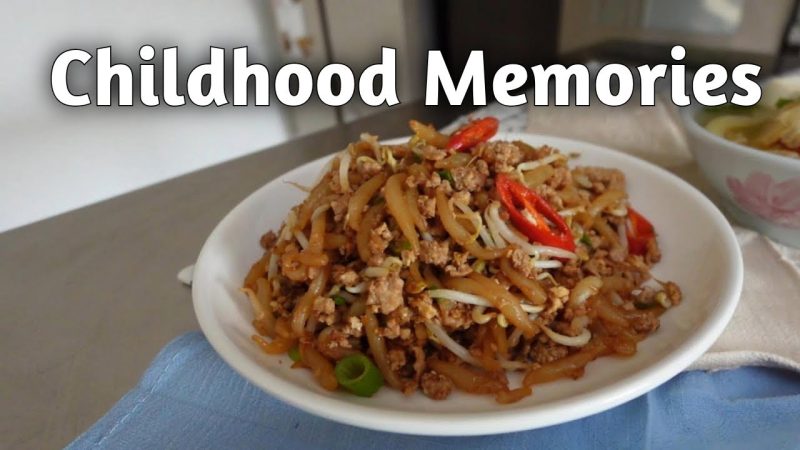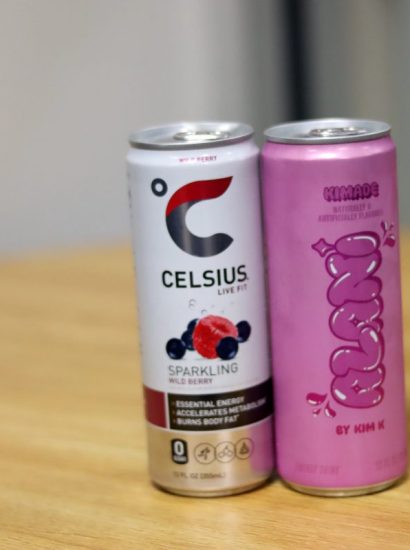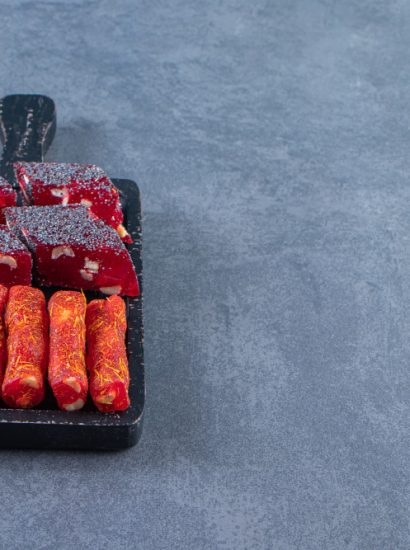If you’ve walked through the bustling hawker centers of Singapore or Malaysia, chances are you’ve seen or tasted Fried Mee Tai Mak—a hearty, savory dish made with short, chewy rice noodles stir-fried in a searing hot wok. Known affectionately as “mouse tail noodles” due to their stubby, tapering shape, Mee Tai Mak (米苔目) is a comforting Southeast Asian staple.
This noodle dish is affordable, delicious, and easy to prepare, making it a favorite among home cooks and street vendors alike. Whether you love wok hei (that signature charred wok fragrance) or crave a new way to enjoy rice noodles, this Fried Mee Tai Mak Recipe is a must-try.
What is Mee Tai Mak?
Mee Tai Mak—also known as silver needle noodles, loh shi fun, or rat tail noodles—is made from a simple rice flour dough shaped into short, tapered noodles. They are typically:
- Soft and chewy in texture
- Gluten-free (made from rice flour)
- Short and stubby, about 3–5 cm long
Unlike other noodles, Mee Tai Mak has a neutral flavor, which makes it the perfect vehicle for bold sauces, garlic, and smoky stir-frying techniques. It’s popular in Chinese, Peranakan, and Malaysian cuisines, often served stir-fried, in soup, or even with claypot dishes.
Ingredients You’ll Need
To make wok-fried Mee Tai Mak, you’ll need the following:
Main Ingredients:
- 400g fresh Mee Tai Mak (silver needle noodles)
- 2 tbsp vegetable oil
- 3 cloves garlic (minced)
- 2 eggs (beaten)
- 150g minced pork or chicken (optional)
- 4–5 medium prawns (peeled and deveined)
- ½ carrot (julienned)
- 1 stalk choy sum or bok choy (chopped)
- 2 tbsp chopped spring onion (for garnish)
Sauce Mixture:
- 2 tbsp soy sauce
- 1 tbsp oyster sauce
- 1 tsp dark soy sauce (for color and depth)
- 1 tsp sesame oil
- ½ tsp sugar
- Pinch of white pepper
Optional Toppings:
- Fried shallots
- Chili padi (bird’s eye chili) in soy sauce
- Sambal belacan on the side
Prepping the Ingredients: Mise en Place
Before turning on the heat, prep everything in advance. Wok cooking is fast, and having ingredients ready ensures the noodles won’t overcook or stick.
- Separate the Mee Tai Mak gently if they’re clumped (use hot water to soften if needed)
- Marinate the meat with a dash of soy sauce and pepper
- Beat the eggs in a small bowl
- Combine all sauce ingredients in a single bowl
- Chop and prepare all vegetables
This step saves time and avoids the all-too-common mistake of soggy noodles or overcooked eggs.
Wok-Frying Like a Pro: The Technique
Here’s a step-by-step guide to frying Mee Tai Mak like a hawker stall expert:
- Heat your wok until it’s smoking hot. Add oil and swirl to coat.
- Add minced garlic and sauté until fragrant (10–15 seconds).
- Add minced pork and stir-fry until browned. Toss in prawns and cook until pink.
- Push meat to the side, add beaten eggs in the center. Let them set slightly, then scramble.
- Add carrots and choy sum, stir-fry briefly.
- Toss in the Mee Tai Mak and pour in the sauce. Stir and toss vigorously for 2–3 minutes.
- Stir-fry until noodles are coated, slightly browned, and infused with the sauce.
- Sprinkle spring onions and give it a final toss.
The key is to work quickly, keep the heat high, and avoid over-stirring. You’re aiming for slightly charred edges and chewy bites.
Flavor Profile: Umami and Wok Hei
What makes Fried Mee Tai Mak stand out is the wok hei—the elusive smoky aroma that comes from cooking on high heat. It combines with:
- Savory depth from soy and oyster sauces
- Sweetness from carrots and sugar
- Richness from eggs and sesame oil
- Earthiness from vegetables and aromatics
The noodles act as sponges, absorbing the sauce while still offering a chewy bite that’s incredibly satisfying. Each mouthful hits the perfect balance between soft, salty, and fragrant.
Variations to Suit Your Taste
Fried Mee Tai Mak is wonderfully versatile. Here are some popular twists:
Protein swaps:
- Use tofu cubes or tempeh for a vegetarian version
- Add Chinese sausage (lap cheong) for sweetness and bite
- Toss in squid rings or fish cakes for a seafood-style stir-fry
Spicy twist:
- Add sambal belacan during cooking for intense heat
- Slice in chili padi or use spicy bean paste
Street food style:
- Top with a fried egg
- Serve on banana leaf for an authentic hawker touch
There are no rules—just don’t skip the sauce base and high heat!
Serving and Storage Tips
Serving suggestions:
- Best served immediately while piping hot
- Garnish with fried shallots, spring onions, or lime wedges
- Pair with pickled green chilies or sambal for a classic kick
Storage:
- Leftovers can be stored in the fridge for up to 2 days
- Reheat in a hot wok or skillet with a splash of water to revive texture
- Avoid microwaving if you want to retain chewiness and wok aroma
This dish is meal-prep friendly, but nothing beats fresh from the wok.
Conclusion
Fried Mee Tai Mak is the definition of comfort food—simple ingredients, quick cooking, and deeply satisfying results. Whether you’re reminiscing about your favorite hawker stall or trying a new noodle dish at home, this recipe brings authentic Southeast Asian flavor to your plate.
Its chewy texture, flavorful sauce, and customizable nature make it a must-know recipe for anyone who loves Asian street food. Best of all, it’s ready in under 30 minutes, making it ideal for weeknight dinners or spontaneous cravings.
Once you’ve made this dish, you’ll never look at rice noodles the same way again.
FAQs
1. What are Mee Tai Mak noodles made of?
Mee Tai Mak is made from rice flour and water, sometimes with a bit of cornstarch. It’s naturally gluten-free and has a chewy, soft texture.
2. Where can I buy Mee Tai Mak?
You can find fresh Mee Tai Mak in the refrigerated section of most Asian supermarkets or wet markets in Singapore and Malaysia.
3. Can I use dry noodles instead of fresh Mee Tai Mak?
There’s no perfect substitute, but short rice noodles or thick vermicelli can work. Rehydrate and cook as directed, but texture may vary.
4. How do I prevent Mee Tai Mak from sticking?
Use high heat, enough oil, and ensure the noodles are separated before adding. A well-seasoned wok or non-stick pan helps too.
5. Is Fried Mee Tai Mak vegetarian?
This recipe includes meat, but you can easily make it vegetarian by using tofu, vegetable stock, and skipping oyster sauce or using a plant-based alternative.
Also read: 50 Cluny Park Road: Luxury Freehold Condo in Singapore’s Prime District 10









